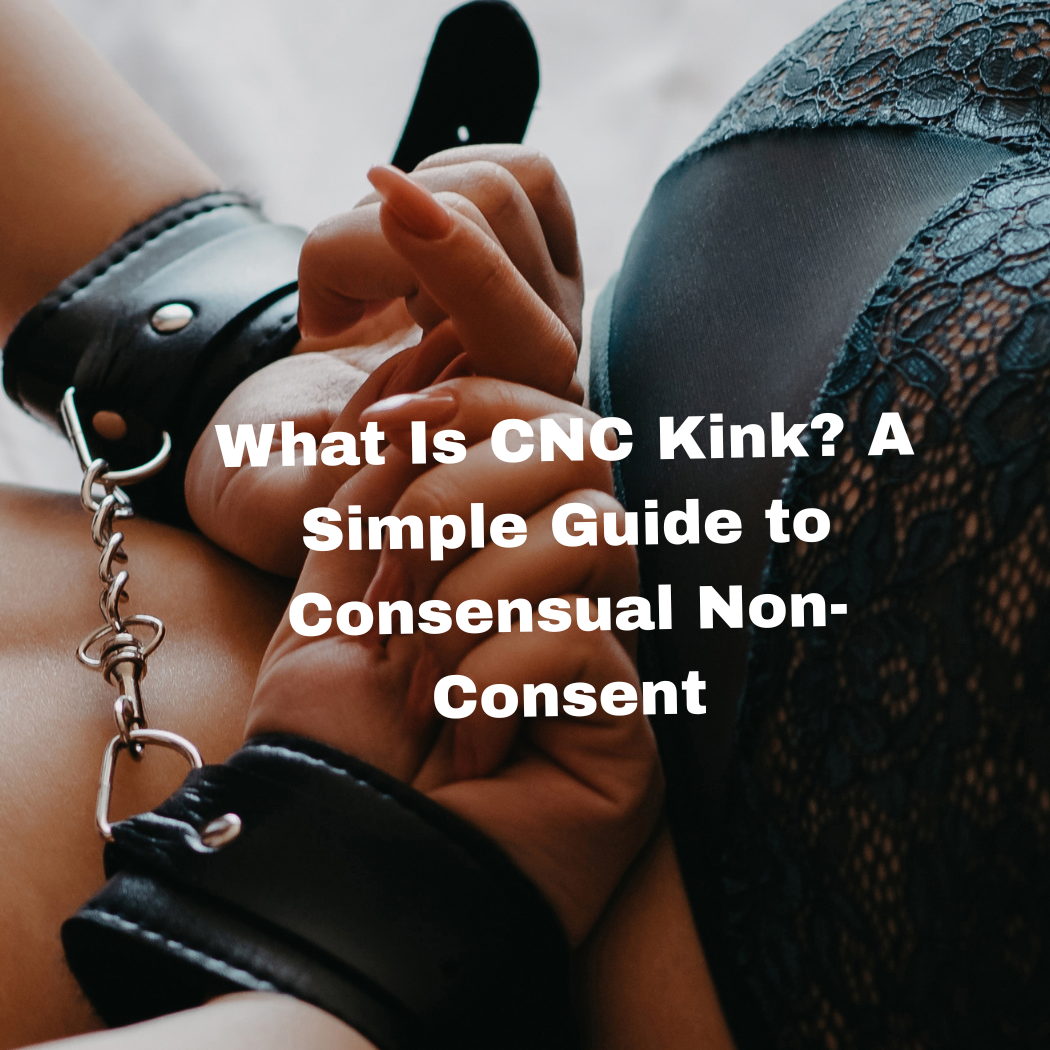Introduction: A Fantasy That Needs Full Consent
CNC stands for Consensual Non-Consent — a kink that plays with the idea of one person pretending not to give consent, even though both partners have fully agreed to it beforehand.
It’s often called “rape play”, but that name can be misleading or uncomfortable for many. CNC is not about actual harm or abuse — it’s about roleplay, power exchange, and deep trust.
This guide breaks it all down: what CNC really means, why some people enjoy it, and how to explore it safely.
What Does CNC Kink Mean?
CNC, or Consensual Non-Consent, is a kink where two or more people pretend that one person is being forced into something — when in reality, they’ve talked about it, agreed to it, and want it.
It’s a type of roleplay often found in BDSM dynamics and may include:
-
Pretending to resist or say “no” as part of the act
-
One partner taking full control, while the other gives in
-
Scenarios that simulate power being taken — but not for real
It’s completely consensual. Without clear consent, it’s not CNC — it’s just wrong.
Why Do People Enjoy CNC?
Everyone is different, but here are some common reasons:
🔥 The Intensity of the Power Shift
CNC creates a strong emotional and physical intensity. One partner gives up control, while the other takes it — in a controlled, agreed way.
🧠 Fantasy Fulfillment
Some people have fantasies about being dominated, taken, or “forced,” and CNC allows them to explore that safely, knowing they’re actually in control the whole time.
❤️ Deep Trust
CNC requires strong communication, safety, and emotional connection. Many couples feel even closer after exploring it together.
😏 It Feels Taboo
For some, the idea of doing something “forbidden” or risky adds excitement. CNC lets you explore those feelings without real danger.

Is CNC Dangerous?
It can be — if not done correctly.
That’s why CNC must include:
-
Clear communication before anything happens
-
A strong and trusted safe word
-
Regular check-ins before, during, and after
-
A full understanding that either person can stop at any time
If someone doesn’t respect those rules, it’s not CNC — it’s abuse.
How to Explore CNC Safely
If you’re curious about CNC, here’s how to approach it the right way:
✅ 1. Talk Openly First
Before anything happens, sit down and discuss:
-
What are your limits?
-
What words or actions are off-limits?
-
What are the clear rules?
-
What’s the safe word?
This isn’t a conversation to rush.
✅ 2. Use Safe Words and Signals
Pick a safe word that means “stop immediately.”
Also, consider using a safe gesture in case someone goes silent or is gagged.
Common safe word system:
-
Green = All good
-
Yellow = Slow down or check in
-
Red = Stop now
✅ 3. Plan the Scenario Together
Even if the act feels “forced,” the setup should be 100% agreed on.
You can plan:
-
The time and place
-
Clothing or props
-
Words or phrases to use
-
Boundaries that can’t be crossed
✅ 4. Always Do Aftercare
After the play is over, take time to reconnect.
CNC scenes can stir up strong emotions, so cuddle, talk, and care for each other.
Ask: “How did you feel about that?” and “Is there anything we should change next time?”

CNC vs Real Consent: Why It Matters
Consent is the difference between CNC and real harm.
Without clear, ongoing consent, CNC becomes something dangerous and damaging.
It’s never okay to surprise someone with CNC or assume they want it.
CNC is built on trust, safety, and love — not fear or manipulation.
Final Thoughts: CNC Is About Trust, Not Control
CNC is a fantasy that looks intense on the outside — but it’s built on the deepest form of trust and communication. It’s not for everyone, and that’s okay.
If you’re curious, talk about it with your partner.
Set clear rules.
Respect each other’s limits.
And always check in, during and after.
Because when it comes to CNC, consent isn’t optional — it’s the Main Thing

Leave a Reply